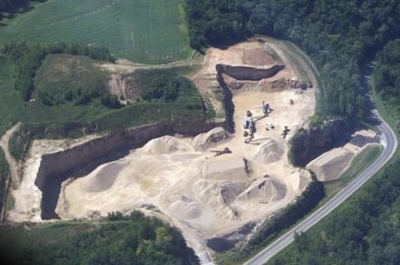
Last month, scientists released a study that pointed out how human-made materials could weigh twice as much as all life on Earth by 2040. It said that most of the human-made stuff came from concrete, followed by gravel, bricks, asphalt, metal and plastic.
After water, concrete is the most widely used substance on Earth. Concrete is nothing but a mixture of cement, air, water, sand, and gravel. Cement is a remarkably good construction material and it is the foundation of modern development. Most of our houses, offices, schools, malls, bridges, dams and other infrastructure are built using cement. Cement buildings shelter us from extreme weather conditions. But it is also important to be aware of cement’s negative impacts on the environment.
Cement is the source of about 8% of the world’s carbon dioxide (CO2) emissions. If the cement industry were a country, it would be the third largest carbon dioxide emitter in the world with up to 2.8 billion tonnes, surpassed only by China and the U.S.
At different stages
The cement production technologies in use cause extensive power consumption, gas emissions, noise pollution, environmental heating and emissions of fuel (CO2, NOx, SO2 and Co) from the kiln and precalciner.
- It is the process of making “clinker”- the key constituent of cement – that emits the largest amount of CO2. Cement is made, using limestone and clay, which are crushed and fed into huge, cylindrical kilns and heated to about 1,450 degrees C. This calcination splits the material into calcium oxide and CO2. Production of one tonne of cement results in release of 780 kg of CO2
- Further, CO2 is emitted as a byproduct of burning of fossil fuels, primarily coal, to generate the heat necessary to drive the cement-making process.
- The cement industry is responsible for a 10th of the world’s industrial water use. This puts a strain on domestic and agricultural water demands.
- The dust from cement mixers contributes to particulate matter. According to a study in 2015, in Delhi, construction releases as much as 10% of the coarse particulate matter that chokes the city. The study also found that the air pollution index at all of the 19 biggest construction sites in 2015 exceeded safe levels by at least three times.
- Concrete also contributes to the heat-island effect by absorbing the warmth of the Sun and trapping gases from car exhausts and AC units.
Picture Credit : Google




